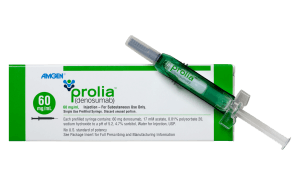
The new California law is very narrowly focused on a small group of four ingredients regarded as potentially toxic. They were chosen because some of them are widely used in producing candies. That makes them potential hazards for children. But already, there are growing pressures to widen the range shortly to cover many more ingredients. These may not be toxic, but they can negatively affect the general health of the wider population.
Raising the bar to get the food fight to tackle the #1 health issue related to food
The growing prevalence of overweight and obese people in the US may be the most pressing food-related issue facing the country today. This escalating health crisis has implications not only for the individual people who are affected but also strains the whole healthcare system of the states. Hopefully, the recent legislation in California, which currently targets only a few specific food ingredients, could be the kick-off point of a new food fight in which authorities initiate broader discussions and actions about how to get to healthier food environments.
Statistics on obesity paint a worrying picture. Coming to grips with the consequences of obesity and its impact on the general health system requires an understanding of just how widespread and deep this issue has become.
According to a press release from the Centers for Disease Control and Prevention (CDC) in September 2023, “new population data from 2022 show 22 states have an adult obesity prevalence at or above 35%, compared to 19 states in 2021. Just ten years ago, no state had an adult obesity prevalence at or above 35%.” You can read more about this in our blog, “What we know about the obesity epidemic.”
It’s worthwhile noting that obesity is a more severe condition than simply being overweight. Generally, the Body Mass Index or BMI is what is used to measure an adult’s relative weight. It is calculated by relating the person’s weight in kilos to height in meters (BMI = kg/m2). People with average weight will rate a BMI between 18.5 and 24.9. Being overweight means they have a BMI of between 25 and 29.9. Obese people have a BMI between 30 and 39.9, and if they have a BMI of 40 or higher, they are treated as being severely obese.
In the United States, between 2000 and 2020, the incidence of obesity in adults increased from 30.5% to over 42%, and the incidence of severe obesity increased from 4.7% to 9.2%.
These numbers highlight a stark trend that a growing proportion of the American population is grappling with obesity. This trend is not limited to adults. It is also a significant concern in children and adolescents, setting the stage for long-term health challenges.
What can you do to avoid becoming part of the overweight populace?
In addressing the obesity epidemic, it is essential to be aware of the role played by specific foods, packaging methods, and ingredients that contribute to unhealthy weight gain. Educating yourself about these factors is vital in joining the food fight and making better dietary choices. This section will outline critical risks associated with certain foods, ingredients, and packaging methods that can mislead you or contribute to unhealthy eating habits.
High-risk foods and ingredients
- Processed and ultra-processed foods are significantly altered from their original form, often with additives like sugars, salts, fats, and artificial flavors. This brings the risk of being too high in calories and too low in nutrient value. They are linked to weight gain and health issues such as heart disease and diabetes.
- Off-the-shelf beverages such as sodas, sweetened teas, and energy drinks almost always have a high sugar content. This contributes directly to excessive calorie intake and leads to weight gain, tooth decay, and other adverse side effects. What’s worse, excessive consumption can eventually lead to insulin resistance and increase the risk of type 2 diabetes.
- Fast foods typically contain too much saturated fat, trans fat, sodium, and calories. Regular consumption can lead to obesity, cardiovascular diseases, and other health complications.
- Refined carbohydrates, such as those found in white bread, pastries, and most other baked goods made with refined flour, have a high glycemic index, leading to rapid spikes in blood sugar and insulin levels. These contribute both to weight gain and to an increased risk of diabetes.
Food packaging and labeling
- Misleading labels like “low-fat” or “natural” can be deceptive. These foods may still be high in calories, sugars, or unhealthy fats. Until there are enforced standards about labeling, it’s better to assume that canned, bottled, or packaged foods are not as good for you as homemade equivalents. And until labels are reliable, you should read nutrition facts and ingredient lists carefully rather than relying solely on marketing claims.
- Overly large portions, often in packaged foods and restaurants, contribute to overeating. Awareness of proper and healthy serving sizes and self-regulation of portion control are essential.
- Chemicals used in packaging can be a hidden danger. Some packaging materials contain unexpected chemicals. Examples are BPA (Bisphenol A) or phthalates, which can leach into the food. These chemicals are linked to obesity and other health issues due to their endocrine-disrupting properties.
Practical tips to help avoid eating the wrong foods
- Prioritize whole foods like fresh fruits, vegetables, lean proteins, and whole grains.
- Read labels carefully, look beyond marketing claims, and understand the nutritional content of foods.
- Control your portion sizes, whether they’re prepacked or homemade foods. Be mindful of how much you’re eating, even when consuming healthier options.
- Limit your intake of sugar. One of the best ways to do this is to cut out canned and bottled drinks and opt instead for water, herbal teas, or other low-calorie drinks. At the same time, remember that drinks that claim to be “low calorie” and sweetened with artificial ingredients are also not good for you if taken in any quantity.
- Be cautious with packaged products, choose fresh or frozen foods over canned or heavily packaged items, and use glass or stainless steel containers for storage.
What are the cost consequences of obesity for individuals and the healthcare systems?
Obesity can affect every facet of a person’s life and health. It is rated as being one of the leading causes of preventable or premature death. It carries with it an increased risk of serious medical conditions, such as cardiovascular diseases, diabetes, and musculoskeletal disorders like osteoarthritis. It can also lead to psychological changes, like depression, anxiety, and lower self-esteem, that can come from social stigma and personal body image concerns.
For the country as a whole, the economic burden of obesity is substantial. The CDC reports that the annual medical cost of obesity in 2020 was $173 billion. Expressing that in per-capita terms, it means that, on average, it costs the system about $1,800 more each year to treat obese people than people with healthy weight.
Obesity-related conditions can lead to sharp swings in economic performance. Decreased productivity, higher disability rates, and increased absenteeism add to the economic cost.
Can government intervention be a catalyst for change?
The recent legislation in California could be a stepping stone toward addressing the obesity epidemic. Such laws could help reduce obesity rates by restricting harmful ingredients and pushing for a shift towards healthier food production and consumption. To effectively combat obesity, a multi-faceted approach is required. Future legislation could take a few simple steps, such as:
- Promoting nutritional education and enhancing public awareness about healthy eating habits and the importance of nutrition.
- Encourage healthier options by incentivizing food producers to develop and market healthier options.
- Regulate advertising and implement stricter regulations on marketing high-calorie, low-nutrient foods, especially to children.
- Support access to healthy foods by increasing the availability and affordability of healthy food options in all communities, particularly in underserved areas.
Conclusion
The obesity epidemic is a significant challenge that involves us all. The recent legislation in California introduces a food fight that focuses on a small number of specific ingredients. It is an encouraging start, but there is a need for broader, more inclusive policies that address more of the root causes of obesity directly. Legislation encouraging healthier food environments, education, and initiatives promoting active lifestyles can significantly improve public health. The fight against obesity is not just about reducing numbers as a whole. It’s about creating a society where good health is accessible and prioritized for everyone. The path toward that goal involves policymakers, the food industry, healthcare professionals, and communities to create a healthier future.
















